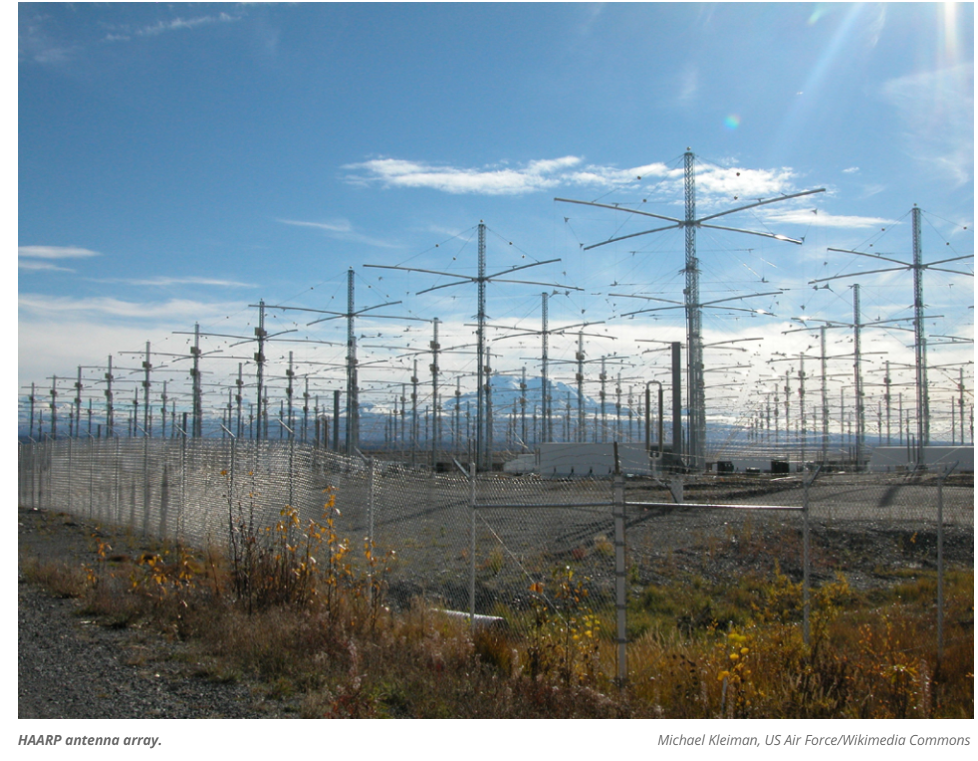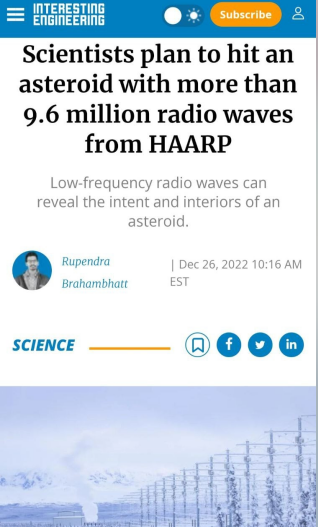In another article, I posed the question of whether the HAARP station has become equipped, as time went by, with more powerful bioweapons.
If you still doubt the powerful weapons that HAARP possesses, here is a recent article, dated December 2022, titled “Scientists plan to hit an asteroid with more than 9.6 million radio waves from HAARP.”
The article states:
“Scientists at the University of Alaska Fairbanks (UAF) and NASA want to examine the 2010 XC15 space rock to test their preparation against Apophis. This dangerous asteroid might hit our planet in 2029. It is believed that on April 13, 2029, Apophis will be 10 times closer to Earth than the moon.
The researchers will use the HAARP (High-frequency Active Auroral Research Program) array to shoot 9.6 megahertz radio waves at the 2010 XC15 asteroid. HAARP is a government-funded research program that generally studies the ionosphere (part of Earth’s atmosphere at 50 to 400 miles above the surface).”
HAARP will dig deep into the asteroid
“Astronomers have been shooting radio waves in space to spot asteroids; figure out their shape, trajectory, structure of their surface, and many other characteristics. For this purpose, they use radio waves having frequency ranges either in the S-band (2,000 to 4,000 MHz) or X-band (8,000 to 12,000 MHz).
Interestingly, for probing 2010 XC15, the researchers are using waves of much lower frequency (9.6 MHz) and longer wavelengths because, this time, they don’t just want to explore the surface of the asteroid. They want to know what’s inside.”
“Information about the interiors could reveal important details about the damage that an asteroid could cause and help scientists figure out an effective counter-strategy.
Explaining this further, the lead researcher and engineer at NASA, Mark Haynes, said, ‘What’s new and what we are trying to do is probe asteroid interiors with long wavelength radars and radio telescopes from the ground. Longer wavelengths can penetrate the interior of an object.’
He further added, ‘If you know the distribution of mass, you can make an impactor more effective because you’ll know where to hit the asteroid a little better.’
2010 XC15, which is a 500-foot-wide asteroid had to pass by Earth on 27th December 2022. HAARP claimed that it can hit the asteroid with a radio pulse. The distance between this asteroid and Earth was around twice the distance between Earth and the moon.
HAARP shot “9.6 million chirping radio waves every second to this distance” and this process had to be repeated every two seconds.
This test was crucial because if the researchers could successfully examine this asteroid using low-frequency radio waves at such a long distance, Then they could easily employ the same method to analyze Apophis, the 2029 asteroid on which they claim there is the possibility it might hit the Earth.
“The Planetary Society wrote on its website, ‘Apophis would cause widespread destruction up to several hundred kilometers from its impact site. The energy released would be equal to more than 1,000 megatons of TNT, or tens to hundreds of nuclear weapons.'”
What are the odds that HAARP is using these bioweapons on the people?


